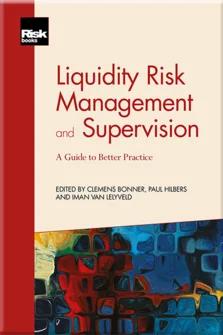Liquidity Risk Management Strategy and Tolerance
Emrah Arbak
Introduction to ‘Liquidity Risk Management and Supervision’
Liquidity Regulation, the 2007-9 Crisis and the Regulatory Response
Sources of Liquidity Risk: Theory and Empirical Evidence
The Process of Liquidity Supervision
How to Implement ILAAP: Lessons Learned at Rabobank
Liquidity Risk Management Strategy and Tolerance
Liquidity Buffer Management and Banks’ Counterbalancing Capacity
Bank-Level Liquidity Stress-Testing
Contingency Funding Plans
Liquidity Transfer Pricing
Intraday Liquidity Risk Management
Putting Liquidity Risk Management into a Wider Context
Macroprudential Liquidity Stress Tests
A Simple Macroprudential Liquidity Buffer
The 2007–9 financial crisis showed that financial institutions should have active strategies to manage their liquidity and funding risks. In developing such strategies, financial institutions should describe how much risk they are planning to take and what to do when these levels of risk, ie, their risk tolerance thresholds, are breached. The development of such a system is a function of the business model of each institution. Banks that rely heavily on short-term wholesale debt have to frequently roll over this stock at market prices, which exposes them to funding risk. In contrast, banks that are more retail oriented are less subject to a rollover risk but may be exposed to the risk of retail bank runs.
Market conditions also matter. For example, certain types of strategic responses that could be possible in relatively benign conditions may not be optimal, or even viable, in more difficult times. In turn, when market conditions improve, institutions may want to take on more risk in certain areas. Either way, the strategic framework should be flexible and incorporate, as far as possible, the dynamic nature of decision-making under uncertainty.
The aim of this chapter is to
Copyright Infopro Digital Limited. All rights reserved.
As outlined in our terms and conditions, https://www.infopro-digital.com/terms-and-conditions/subscriptions/ (point 2.4), printing is limited to a single copy.
If you would like to purchase additional rights please email info@risk.net
Copyright Infopro Digital Limited. All rights reserved.
You may share this content using our article tools. As outlined in our terms and conditions, https://www.infopro-digital.com/terms-and-conditions/subscriptions/ (clause 2.4), an Authorised User may only make one copy of the materials for their own personal use. You must also comply with the restrictions in clause 2.5.
If you would like to purchase additional rights please email info@risk.net











